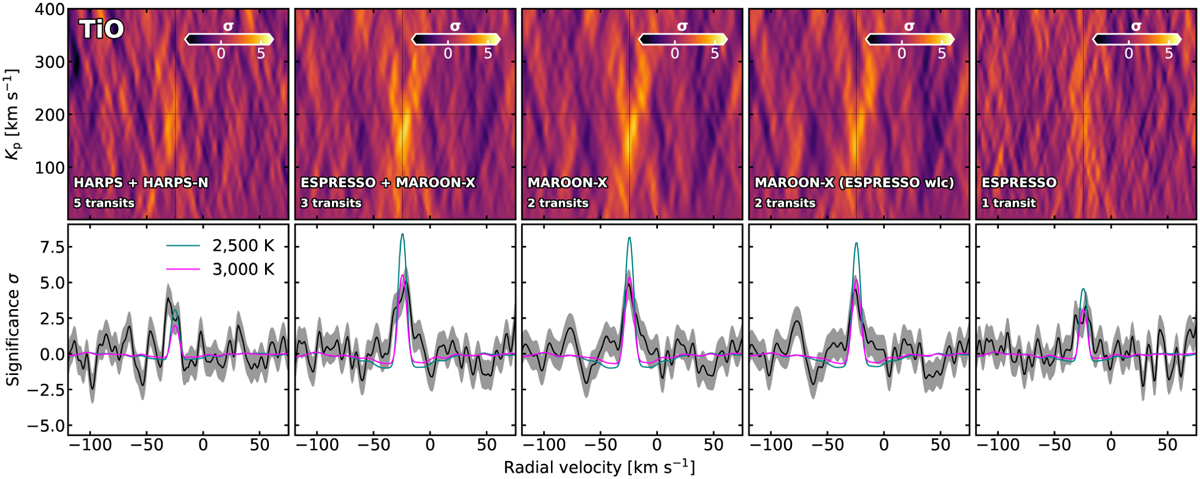Fig. 6

Download original image
Cross-correlation results in Kp – Vsys space for TiO in WASP-189 b’s atmosphere during eight transit events with HARPS & HARPS-N, ESPRESSO, and MAROON-X. From left to right: MAROON-X alone, MAROON-X restricted to ESPRESSO wavelength coverage (wlc), and ESPRESSO alone (see Table 1). The dashed lines indicate the expected location of the signal if we assume a symmetric planet with a static atmosphere. The model predictions show the expected signal strength using models at 2500 (in teal) and 3000 K (in magenta) in chemical and hydrostatic equilibrium of solar metallicity, previously used in Prinoth et al. (2022), and have been scaled by a factor of six for clarity to show that the model discrepancy is equivalent in the data from the three different instruments despite their different wavelength coverage. The predicted signals are a measure of the sensitivity of the dataset and show that we expect MAROON-X to have a stronger signal. We note that discrepancies with Prinoth et al. (2022) stem from a different weighting algorithm based on the predicted signal strength (through model injection) applied here. This weighting algorithm favours the signal of better nights, increasing the signal strength overall. The results show that the signal is recovered in the new datasets alone as well but with a lower relative flux compared with expectations from the model injection.
Current usage metrics show cumulative count of Article Views (full-text article views including HTML views, PDF and ePub downloads, according to the available data) and Abstracts Views on Vision4Press platform.
Data correspond to usage on the plateform after 2015. The current usage metrics is available 48-96 hours after online publication and is updated daily on week days.
Initial download of the metrics may take a while.


